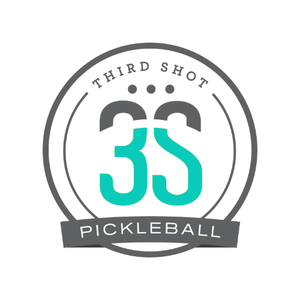“What’s a great drill for novice pickleball players?
“How about intermediates?”
“What are the best drills for advanced players?”
These are questions that I am asked on a pretty regular basis from pickleball instructors who want to know what drills and games they can use with players of different skill levels.
I’m always happy to share my ideas. In fact, I wrote a whole drill guide about it. But whenever responding to these questions I always add something like this:
“Drills aren’t inherently fun or boring. It’s how they are packaged — how they are introduced to the players that will really determine how well received they are.”
And I think this is true.
There are no inherently fun or boring drills — it’s their presentation that matters.
Take a simple activity like hitting volleys back-and-forth from the non-volley line. Is that drill automatically fun? I don’t think so. But could it be fun? Absolutely. So what’s the missing ingredient?
Fun or boring? How people see a drill depends largely on how it is presented.
I spend a lot of time working with instructors. This is through my work with Pickleball Coaching International but also as the Head of Pickleball Coach Education for Tennis Canada. In both roles I see a lot of current, and aspiring pickleball instructors. I’m not going to lie: I often see someone and immediately think “Wow. This person is going to be great!”
But what is it that stands out in this moment and catches my attention? It isn’t their playing skill. It isn’t their technical or tactical knowledge. It’s not their fancy paddle or their multiple tournament wins. What makes someone stand out to me as a star is them — or rather, who they present themselves as when leading a group.
Let me give you an example from a recent instructor certification course I ran in Sydney, Australia:
Kerri (not her real name) is about five-foot-nothing. A tiny blonde woman in her forties. Before the session started, I didn’t notice anything remarkable about her. She was on time, friendly with others, but nothing about her stood out. But once we got out on the court everything changed. I asked for volunteers to run a short group warm up of their choosing. Kerri, looking around and seeing some reluctance from the others, said: “I can do it”. She proceeded to run one of the most fun and engaging warm-up routines I’ve seen in a long time.
Nothing about the activities she had the players do was particularly unique: a little crosscourt dinking, some reflex volleys, mid-court resets and some drops and drives. To be honest, these are the things that most pickleball players do on a regular basis. What stood out with Kerri, however, was her. Rather, it was the role she was playing as the instructor.
Available Now!
Are you looking for a certification program? PCI offers instructor certification on your schedule and at your pace.
Throughout the 10 minute warm-up Kerri didn’t stop moving. She circled the three courts deliberately, giving encouragement to each person she passed. And she was loud. No matter which court you were on, you could hear Kerri praising the effort of the players and keeping them on track. She wasn’t barking orders or being rude, she was leading.
Kerri’s leadership kept people focused and working together.
She also incorporated humour — something coaches are often afraid to do lest they seem ‘unprofessional’. She teased one player for working so hard to avoid her backhand. She joked with another “Did you just let that ball bounce twice? Come on man, my grandma could have got that.” The players felt her presence and were motivated by it — it didn’t matter that they were doing drills they had done a million times before.
When it comes to great pickleball coaching and, I would argue, good teaching in general, it’s less about what you know and more about who you are. Actually, it’s not even about who you are. It’s about who you present yourself as in front of the group — who you pretend to be.
As a pickleball coach we are in the people business. In some ways I would argue that we’re also in the entertainment business. When people come for a pickleball lesson yes, they want to learn, but they are also there for the experience. They want to have fun they, want to be challenged and they want to leave feeling better than when they arrived. They want to make friends and feel good about themselves. Effective coaches understand this and can present what they’re doing in a way that meets all of those goals while using pickleball as a catalyst.
Great coaches know how to joke when things need to lighten up, and they can push at just the right time to get more from their players. They can laugh (at themselves, importantly) but also know how to keep people in line when focus wanes.
It’s not the drills Kerri used that made her warm-up great — it was the way that she interacted with the players. She showed she cared a was paying attention. She was supportive and encouraging but also sincere. She was a leader.
If you are a pickleball instructor or aspiring to be one, take a minute to assess not what you know, but who you are on the court. What is the persona that you are presenting? Is it a fun, gregarious and competent leader? Or is it a shy and reserved technician? I would argue that your success as a teacher has much less to do with what you know, and much more to do with who you are — or who you pretend to be.
Mark Renneson is a professional pickleball coach and is the founder of Pickleball Coaching International and Third Shot Sports. He can be reached at mark@thirdshotsports.com.






